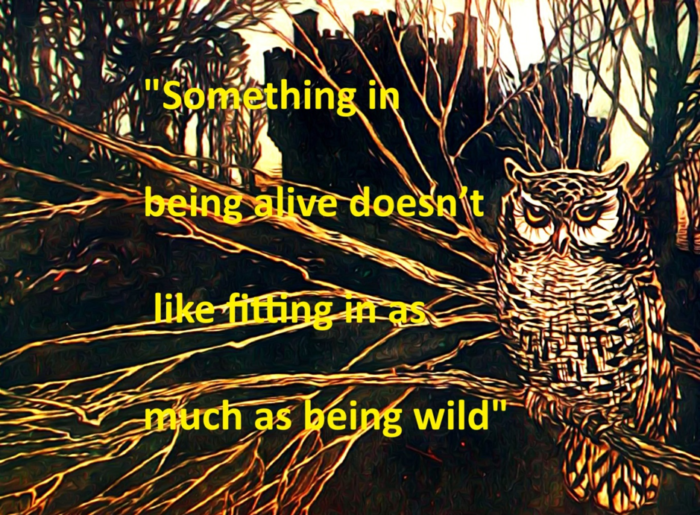
Dr Walter Harry Willies was professor of English and associate professor of sociology at the North West University, South Africa. He is now emeritus professor of narrative studies at the Western Orthodox University and American European University. He qualified in homeopathic medicine through the British Institute of Homeopathy and is a registered poetry therapist with the National Association for Poetry Therapy, New York.
He is moving base to Glasgow, and more about his work can be seen at www.story-clinic.com and www.watermanhomeopathy.com
He is available for remote consultations.
Studying the brain in terms of physiology, functionalities and purpose relates to an attempted objective understanding which is the way scientific practice goes. But here’s an interesting idea: the brain produces stories at the rate of thousands, perhaps more, per second, and settles down to two or three which get shuffled around as a means to feeling grounded or real or balanced. But really, these might not be the best stories for health.
We tend to think of reality and imagination being in two opposite camps. We’ve been taught that. There are many influences that urge us to go the other way, Martha Beck being one of them, Jung another. From my point of view, I’ve had the benefit of a severe academic training, and the experience of an uncontrollable imagination. Which of these connects more readily with truth?
My point of departure is always the body. We’ve developed intricate vocabularies describing the body and what it does. From physiological descriptions to psychoneuropharmacological actions to pharmaceutical interventions, definition and statistical evidence are crucial to determining experimental and practical validity.
But that’s not how a human works. The jargon of reality and wording personal truth are not easy bedfellows, and the difference between pinning down the body and raping the body is both delicate and not so delicate.
Would you more readily believe a physiologist, a psychologist, a priest or a philologist to describe your personal truth?
I have to admit that when it comes to academia, I have a preference for multi-disciplinarity, and of course one can easily be side-tracked into any one of many discourses, all of which are rich, valuable, debatable, researchable. I have made my own discovery in that imagination is indeed an unresearched body organ, as important as the heart, liver, lungs and all the rest, and as unknown as tomorrow.
Except that it is immediately and fully available.
Of course there are very many therapies that are deeply involved with imagination, for example all those embedded in the arts-medicine range. My question is: how do you research imagination? Would you go down the psycho-physiological-neurological path, and yes, you can add any number of extra labels?

Or would you encourage the disclosure of vulnerability, desire, ambition, refusal by means of deep listening and conversation and story? This is what ordinary friendship does, and ordinary friendship isn’t far removed from shamanist practice.
Shamanist practice
Studying something is one step removed from doing something, and, in a nutshell, that’s what I would say makes a shaman: the doing. In our era, this is a hacked and over-hacked term, and you can recount only the journey you’ve undertaken. So, to slow down from everyday discourse, and create and listen to individual experience, honouring the story is prerequisite. To embark on such a ritual one needs to know how to honour. This would seem obvious, but the practice thereof is not part of contemporary culture. How do you do it?
Honouring includes listening, allowing, grasping, understanding, respecting, recognising and reciprocating. Most interestingly, it doesn’t have a lot of room for tolerating, if tolerating is prioritised.
Talking rubbish isn’t so good for shamanist practice. Or behaving badly.
The story has to be authentic, accessible, credible and internable (able to be digested without causing distress).
Telling your story in any way is valuable. Listening to and grasping any part of your story is of cosmic importance. It helps more than you to exist and even persist.
Story Medicine
How do you know when a story is healthy for you, and more importantly, how do you know when your own story is doing healthily or less healthily for you?
The answer to this one, in my experience, is whether the sense of the story is integrative or disintegrative. Story and soul have a way of working together, (read Tim Freke: “Soul Story” [https://www.amazon.co.uk/Soul-Story-Evolution-Purpose-Life/dp/1780289847]) and that’s another topic, but if we stick with the sense of felt integration, which means feeling at home with yourself, that’s the basic idea of feelings announcing what works and what doesn’t work for you.
The shaman travelled for the tribe, and came back with a story that helped or contributed to change, meant for better things. Or resolving things. In each of us, there’s a shaman, one who grasps how the body has travelled from before time, to the here and now, and has a story to tell that heals and reassures contemporary despair: it’s not so. That healing story is about clarity, connection, coherence, communication and commitment. Each of these is a huge chapter.
Your shamanic story
Something in being alive doesn’t like fitting in as much as being wild. Something in being here and now knows that the immeasurability and intensity of being infinite won’t ever settle down. Something in your heart wants to know and be known. The body is a cosmic ritual, a drama, a conversation, a deliberate moment, a chord that hovers above an orchestra.
And far from being a crazy construct, this story, when told, validates the everyness that desires to articulate the unknown, to make it less intangible, more beautiful, more accessible, less arguable, more participative,
The shaman was a useful, valuable, mysterious and possibly magical member of yesterday’s tribe.
Today is about your story contributing to and changing what we discover about our contemporary tribe.
A key aspect of story is attention. When we read, watch or otherwise engage with story, our attention gets in synch with the narrative, and this neurological process is literally fascinating. To go beyond everyday givenness, and find or rediscover integrity, which is a matter self-recognition, choice and personal truth, one travels a shamanic path. This means several things: that truth is more than words, that purpose and pain are unavoidable, and that beginnings and endings are not entirely what they seem to be.
It’s difficult to be precise about the body’s shamanic story without being specifically personal. Here are some questions to work out:
On a scale of one to ten, how well is your soul? (No meta-thinking allowed.)
- What feeds your soul?
- What currently eats your soul?
- What has eaten your soul?
- How does your body reflect your experiences and your feelings?
If you had to speak only from the heart, try a paragraph.
If you journey into your heart, what do you see? Sense? Intuitively know?
If you journey from your heart, same questions?
Past -life regression, in -between -life accounts, NDE, out of the body experience, astral traveling and other ways of languaging the reality of imagination are stories that suggest varieties of shamanist practice, and here I’d offer a word of caution: everyone has their own index of esoteric jargon tolerance. Even hard physics can dive into esoteric non-explanation, as Lynne McTaggart’s books show. Christians are happy to talk about the Holy Spirit but not about personal guides, mediums talk to the dead, some people see auras, others are happy to discuss colour therapy, reiki would probably not be discussed by surgeons and I’ve not yet met a dentist who is well-informed on aromatherapy.
One of the reasons why I’ve become so interested in the sense of story is that the mood and vocabulary of one’s story have no need to be controlled. You’re both author and narrator.
What also strikes me is that the more daring you are as your own shaman, the more healing is the story that you tell on your return. Return from where, I hear?
There are any number of departure points from which to go, discover and return.
My own special interests are to listen to the Anita Moorjani’s, the Caroline Myss’s, the Brandy Gilmore’s, in other words those who have had physical problems, and have survived to tell the tale and teach others about the possibility of their own healing stories. The Western doyen is Louise Hay.
If you’re willing to jump in the deep end, tell the story of your sexual energy, no holds barred. That’s guaranteed to turn your own head towards itself, and wonder who’s talking.
If you’re wondering about your spiritual story and what it could be, drop into your heart area and simply speak or write spontaneously without thinking too much.
“And I alone have escaped to tell the tale,” said Ishmael, at the end of “Moby Dick”. It’s one of my favourite lines.
We tell our stories alone, we feel, but in the actual doing of that, there are miracles. The persona is well-named, because the neurons always do it for themselves, with or without consent. The persona is the mere mask, held up often by tired hands.
And what a neuron is, is one of the most intriguing stories waiting for utterance. “Full Voice” by Barbara McAffee is not about neurons, but I would say it is.
There are many ways of telling the truth.
